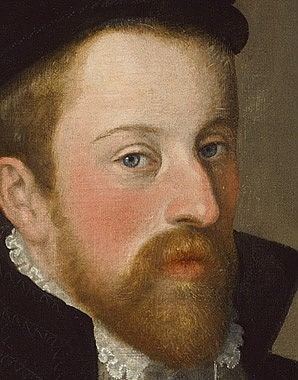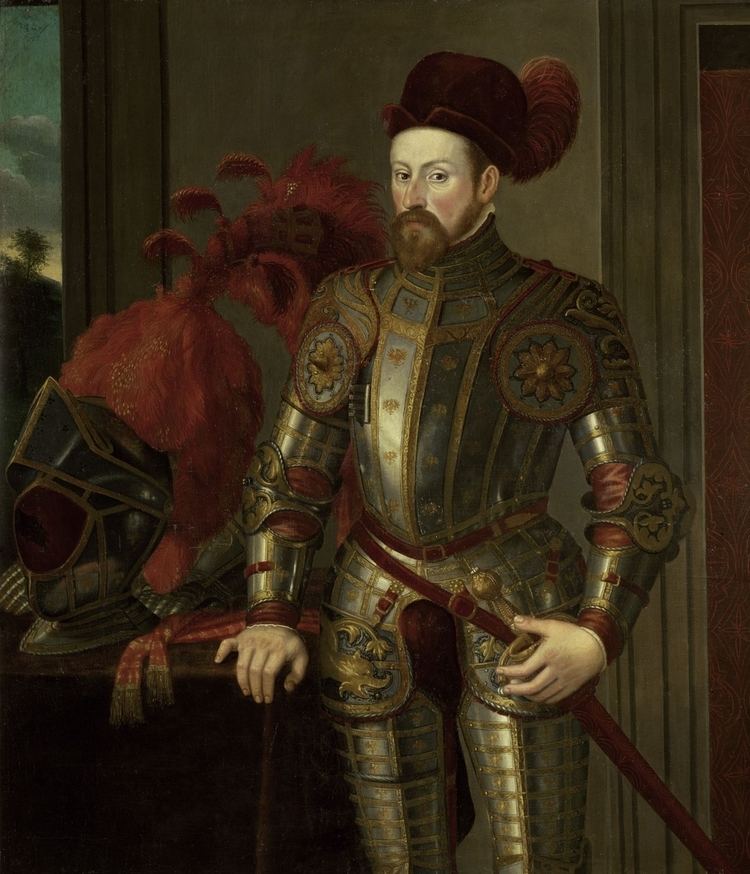Reign 1564–1595 Name Ferdinand Archduke | Predecessor Ferdinand I | |
 | ||
Issue Margrave Andrew of BurgauCharles, Margrave of BurgauAnna, Holy Roman Empress Siblings Maximilian II, Holy Roman Emperor Children Anna of Tyrol, Charles, Margrave of Burgau, Margrave Andrew of Burgau Parents Anne of Bohemia and Hungary, Ferdinand I, Holy Roman Emperor Similar People Ferdinand I - Holy Roman E, Philippine Welser, Maximilian II - Holy Roman E, Rudolf II - Holy Roman E, Matthias - Holy Roman E | ||
Ferdinand II, Archduke of Austria
Ferdinand II, Archduke of Further Austria (Linz, 14 June 1529 – 24 January 1595, Innsbruck) was ruler of Further Austria including Tirol. The son of Ferdinand I, Holy Roman Emperor, he was married to Philippine Welser in his first marriage. In his second marriage to Anna Juliana Gonzaga, he was the father of Anna of Tyrol, the would-be Holy Roman Empress.
Contents

Life account
Archduke Ferdinand of Austria was the second son of Ferdinand I, Holy Roman Emperor and Anna of Bohemia and Hungary. He was a younger brother of Emperor Maximilian II. At the behest of his father, he was put in charge of the administration of Bohemia in 1547. He also led the campaign against the Turks in Hungary in 1556.
In 1557 he was secretly married to Philippine Welser, daughter of a patrician from Augsburg, with whom he had several children. The marriage was only accepted by Emperor Ferdinand I in 1559 under the condition of secrecy. The children were to receive the name "of Austria" but would only be entitled to inherit if the House of Habsburg became totally extinct in the male line (See also: morganatic marriage). The sons born of this marriage received the title Margrave of Burgau, after the Margraviate of Burgau, an ancient Habsburg possession in Further Austria. The younger of the sons, who survived their father, later received the princely title of Fürst zu Burgau.
After his father's death in 1564, Ferdinand became the ruler of Tirol and other Further Austrian possessions under his father's will. However, he remained governor of Bohemia in Prague until 1567 according to the wishes of his brother Maximilian II.
In his own lands, Ferdinand made sure that the Catholic counterreformation would prevail. The cultured humanist from the House of Habsburg was instrumental in promoting the Renaissance in central European. He also was an avid collector of art. He accommodated his world-famous collections in a museum built specifically for that purpose, making Ambras Castle Innsbruck the oldest museum in the world. As the only Renaissance Kunstkammer of its kind to have been preserved at its original location, the Chamber of Art and Curiosities at Ambras Castle Innsbruck represents an unrivalled cultural monument. The collection was started during his time in Bohemia and subsequently moved it to Tyrol. In particular, the Chamber of Art and Curiosities, the gallery of portraits and the collection of armor were highly expensive, which is why the archduke incurred a high level of debt. Today these collections are at Ambras Castle Innsbruck and in the Kunsthistorisches Museum in Vienna.
After the death of Philippine in 1580, he married Anne Catherine, a daughter of William I, Duke of Mantua, in 1582.
Archduke Ferdinand died on 24 January 1595. Since his sons from the first marriage were not entitled to the inheritance, and the second produced only surviving daughters, Tirol was reunified with the other Habsburg lines. His daughter from the Mantuan marriage became the Empress Anna, consort of Emperor Mathias, who received his Further Austrian inheritance.
Children
He and his first wife Philippine Welser were parents of four children:
On 14 May 1582, Ferdinand married his niece Anne Catherine. She was a daughter of William I, Duke of Mantua, and Eleonora of Austria, younger sister of Ferdinand. They were parents to three daughters:
He had at least two illegitimate children:
–With Anna von Obrizon:
–With Johanna Lydl von Mayenburg:
